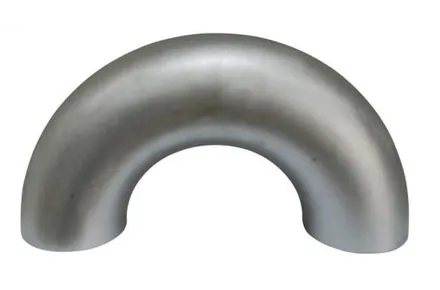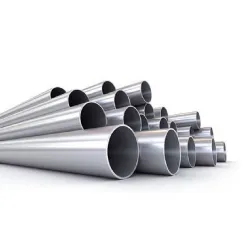-
Cangzhou Yulong Steel Co., Ltd.
-
Phone:
+86 13303177267 -
Email:
admin@ylsteelfittings.com
- English
- Arabic
- Italian
- Spanish
- Portuguese
- German
- kazakh
- Persian
- Greek
- French
- Russian
- Polish
- Thai
- Indonesian
- Vietnamese
- Zulu
- Korean
- Uzbek
- Hindi
- Serbian
- Malay
- Ukrainian
- Gujarati
- Haitian Creole
- hausa
- hawaiian
- Hebrew
- Miao
- Hungarian
- Icelandic
- igbo
- irish
- Japanese
- Javanese
- Kannada
- Khmer
- Rwandese
- Afrikaans
- Albanian
- Amharic
- Armenian
- Azerbaijani
- Basque
- Belarusian
- Bengali
- Bosnian
- Bulgarian
- Catalan
- Cebuano
- China
- China (Taiwan)
- Corsican
- Croatian
- Czech
- Danish
- Esperanto
- Estonian
- Finnish
- Frisian
- Galician
- Georgian
- Kurdish
- Kyrgyz
- Lao
- Latin
- Latvian
- Lithuanian
- Luxembourgish
- Macedonian
- Malgashi
- Malayalam
- Maltese
- Maori
- Marathi
- Mongolian
- Myanmar
- Nepali
- Norwegian
- Norwegian
- Occitan
- Pashto
- Dutch
- Punjabi
- Romanian
- Samoan
- Scottish Gaelic
- Sesotho
- Shona
- Sindhi
- Sinhala
- Slovak
- Slovenian
- Somali
- Sundanese
- Swahili
- Swedish
- Tagalog
- Tajik
- Tamil
- Tatar
- Telugu
- Turkish
- Turkmen
- Urdu
- Uighur
- Welsh
- Bantu
- Yiddish
- Yoruba

Jan . 09, 2025 11:46 Back to list
JIS B2311 BUTT-WELDING Cap
In the diverse world of plumbing and piping systems, understanding the different types of pipes is crucial for ensuring the longevity and functionality of any fluid transport system. Pipes, being fundamental components in both residential and industrial structures, need to be selected carefully based on their material properties and the specific requirements of the project. This article explores some of the most popular pipe types, their unique characteristics, and their applications, aiming to provide comprehensive insights for those interested in enhancing their understanding or improving their skills in pipe selection and maintenance.
Cross-linked polyethylene (PEX) pipes have gained popularity for both residential and commercial plumbing projects owing to their flexibility and ease of installation. PEX piping is well-suited for retrofitting projects because it can be snaked into walls easily. Its ability to expand makes it resistant to bursting during temperature fluctuations, providing an effective solution for regions experiencing harsh winters. Galvanized steel pipes were once the plumbing standard before the advent of copper and plastic polymers. They are robust and primarily used for outdoor projects such as water supply lines and fencing posts. Nonetheless, the potential for rust and scale build-up inside the pipes over time has led to a decline in their use for indoor installations. When dealing with wastewater systems, acrylonitrile butadiene styrene (ABS) pipes are often preferred due to their strong resistance to impact and abrasion. ABS pipes are lighter and more straightforward to install compared to other materials, yet they share PVC's vulnerability to UV light, confining their usefulness to indoor or underground applications. In conclusion, when selecting the appropriate type of pipe, understanding the specific requirements of your project in terms of temperature, pressure, corrosion resistance, and cost is essential. By choosing the correct pipe material and design, one can ensure not only the success of installation but also the long-term integrity and performance of the plumbing system. For any ambitious project manager, engineer, or homeowner, mastering the nuances of pipe types enhances not only the safety and reliability of fluid transport systems but contributes meaningfully to the overall efficiency and environmental responsibility of their constructions.


Cross-linked polyethylene (PEX) pipes have gained popularity for both residential and commercial plumbing projects owing to their flexibility and ease of installation. PEX piping is well-suited for retrofitting projects because it can be snaked into walls easily. Its ability to expand makes it resistant to bursting during temperature fluctuations, providing an effective solution for regions experiencing harsh winters. Galvanized steel pipes were once the plumbing standard before the advent of copper and plastic polymers. They are robust and primarily used for outdoor projects such as water supply lines and fencing posts. Nonetheless, the potential for rust and scale build-up inside the pipes over time has led to a decline in their use for indoor installations. When dealing with wastewater systems, acrylonitrile butadiene styrene (ABS) pipes are often preferred due to their strong resistance to impact and abrasion. ABS pipes are lighter and more straightforward to install compared to other materials, yet they share PVC's vulnerability to UV light, confining their usefulness to indoor or underground applications. In conclusion, when selecting the appropriate type of pipe, understanding the specific requirements of your project in terms of temperature, pressure, corrosion resistance, and cost is essential. By choosing the correct pipe material and design, one can ensure not only the success of installation but also the long-term integrity and performance of the plumbing system. For any ambitious project manager, engineer, or homeowner, mastering the nuances of pipe types enhances not only the safety and reliability of fluid transport systems but contributes meaningfully to the overall efficiency and environmental responsibility of their constructions.
Next:
Latest news
-
ANSI 150P SS304 SO FLANGE
NewsFeb.14,2025
-
ASTM A333GR6 STEEL PIPE
NewsJan.20,2025
-
ANSI B16.5 WELDING NECK FLANGE
NewsJan.15,2026
-
ANSI B16.5 SLIP-ON FLANGE
NewsApr.19,2024
-
SABS 1123 FLANGE
NewsJan.15,2025
-
DIN86044 PLATE FLANGE
NewsApr.19,2024
-
DIN2527 BLIND FLANGE
NewsApr.12,2024
-
JIS B2311 Butt-Welding Fittings LR/SR 45°/90° /180°Seamless/Weld
NewsApr.23,2024











